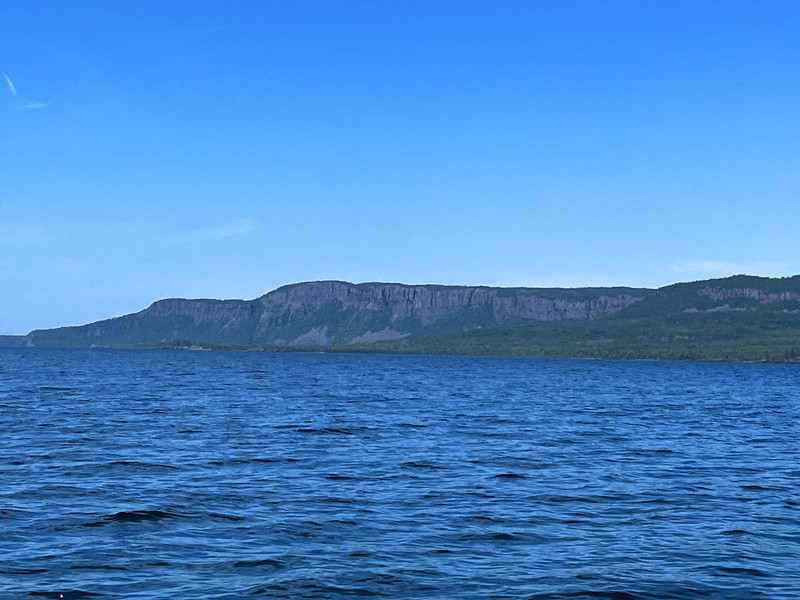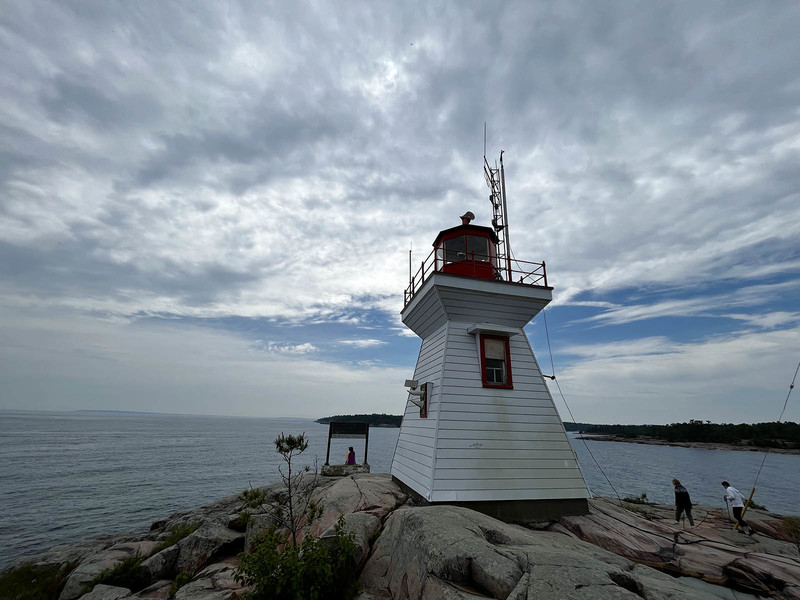Fans of Milwaukee – and Great Lakes – history who haven't signed up for the Wisconsin Marine Historical Society's mailing list are missing out.
The group – headquartered at Milwaukee Public Library, which I featured in this story a few years back – is very active in terms of collecting and archiving documents and photos and objects and also hosts numerous events each year.
The newsletter is an easy way to find a cool old photo in your inbox every week (sometimes more). And, because these folks are history buffs like the rest of us, there's always a story behind the photo and the WMHS folks share that story.
Here is today's story – written by Suzette Lopez – from the Wisconsin Marine Historical Society:
On this day Oct. 22, 1929, the car ferry MILWAUKEE left Milwaukee’s harbor about 12:30 p.m. in a heavy gale with 25 freight cars and a crew of 46. It is believed that the raging storm and “mountainous waves” caused at least one of the freight cars to break loose crashing into the stern sea gate.
With that bent, water rushed in and she foundered about 6:30 p.m. talking all on board with her. The MILWAUKEE had no radio transmitter so no distress was sent.
Built as the MANISTIQUE, MARQUETTE & NORTHERN in 1903 at Cleveland, Ohio, by the American Ship Building Co., she measured 338 feet in length and 56 feet in beam. She was renamed MILWAUKEE in 1908 when the Grand Trunk Line bought her from the Manistique, Marquette & Northern Railway Company. She ran from Milwaukee to Grand Haven, Michigan.
(NOTE: This vessel should not be confused with the SS Milwaukee Clipper, which later connected Milwaukee and Muskegon.)
The following is Cal Kothrade’s story. He tells of his dives on the MILWAUKEE and explains how we are able to view such beautiful underwater photographs.
Since the wreck of the rail car ferry MILWAUKEE was found, it has been a mainstay of the Milwaukee diving community, a must dive destination for advanced and technical divers alike.
Milwaukee area diver and shipwreck hunter Kent Bellrichard found the massive wreck quite by accident back in 1972. Shortly after clearing Milwaukee's harbor for a run to the northern part of the lake where he would search for another wreck, Kent dropped his newly acquired Navy surplus sonar in the water.
Within minutes the sonar registered a large target worthy of noting the location for future investigation. Subsequent dives on the newly found target weeks later would reveal his prize.
At well over 300 feet long, this steel-hulled prop driven vessel has much to offer the local diver looking for multiple dives and opportunities to discover something new. Interior penetration has become more difficult and dangerous over the years as the wreck continues to come apart from the ravages of time under water, but is still possible for the properly trained explorer.
As a photographer of shipwrecks, I have personally always been drawn to the wide angle shots on the outside of a wreck, seldom venturing too deep into the bowels of disaster looking for closeups of wrenches, old beds, and toilets.
The MILWAUKEE's bow and stern are where the money shots are for guys like me, while the vast midsection is merely a pathway to swim from one end to the other, offering little in the way of magazine cover views.
At the stern, I always made it a point to visit the bottom of the lake at 120 feet, just forward of the starboard prop. Why? Because that's where one can see the most absurd underwater sight, a railroad car wheelset, also known as a 'truck', firmly pinned under the starboard prop shaft.
Having rolled free of the boat's deck, the truck no doubt went to the bottom in record time to the sand and clay where it will remain for all eternity, beating the vessel that moments earlier had carried it. The wreck then settled onto it, making for a unique photo op.
Also in that image is a diver positioned for size reference at one of the four blades of one of the two 12-foot diameter props.
Other stern attractions are the rails on the deck that the cars rolled aboard on, and the very badly bent sea gate that is generally blamed for the inrush of water from an angry sea, eventually causing the MILWAUKEE’s sinking and the death of all souls aboard.
At the pointy end of the wreck is the still proud bow, coming 30 feet up off the lake bottom. The image above shows the steam powered windlass under the upper most deck at the very prow, and some portholes that are fun to look out while imagining all those who did the same in better times.
Other images demonstrate the size of the vessel as there are divers in frame for reference. Noted are the diver lighting up the starboard hawsehole, the point where chain once raised and lowered one of her massive anchors.
Another shows a diver making his way toward the pilot house which settled a short 80 foot swim off the port bow, after being blown clear of the sinking ship from built up air pressure. As a wood structure, this set of rooms no doubt floated briefly on the tumultuous surface before beginning its trip to the darkness below.
A polypropylene line is tied between the pilot house and the rest of the wreck to allow divers safe passage between the two in times of lower visibility.
In dozens of dives on this wreck, I have never been able to see the pilot house from the hull, though once I was able to make out the large looming shadow of the hull from the pilot house.
In my experience, it is rare to have more than 60 or 70 feet of visibility at this location. More commonly in the last five years or so, 20-40 feet seemed the norm.
As with all dives in the Great Lakes, water clarity and color can vary widely from day to day. As a photographer, I strive to portray the images as they appeared to my eyes when I took the photos. These types of adjustments are made with the use of post-production software, where one has advanced tools to help with color cast, contrast and even clarity to some extent.
These images, shot over the span of several years, were taken with a Canon T1-I Rebel DSLR mated to a Canon 10-22mm superwide rectilinear lens, in an Ikelite housing. Natural light was supplemented by Ikelite DS-161 strobes on some images.
Cal Kothrade is the Shipwreck Ambassador of the Wisconsin Marine Historical Society, a diver, a photographer and an artist. His work can be viewed at calsworld.net.
Above-water photos courtesy of The Great Lakes Marine Collection of the Milwaukee Public Library and Wisconsin Marine Historical Society. Below-water photographs by Cal Kothrade.
Born in Brooklyn, N.Y., where he lived until he was 17, Bobby received his BA-Mass Communications from UWM in 1989 and has lived in Walker's Point, Bay View, Enderis Park, South Milwaukee and on the East Side.
He has published three non-fiction books in Italy – including one about an event in Milwaukee history, which was published in the U.S. in autumn 2010. Four more books, all about Milwaukee, have been published by The History Press. A fifth collects Urban Spelunking articles about breweries and maltsters.
With his most recent band, The Yell Leaders, Bobby released four LPs and had a songs featured in episodes of TV's "Party of Five" and "Dawson's Creek," and films in Japan, South America and the U.S. The Yell Leaders were named the best unsigned band in their region by VH-1 as part of its Rock Across America 1998 Tour. Most recently, the band contributed tracks to a UK vinyl/CD tribute to the Redskins and collaborated on a track with Italian novelist Enrico Remmert.
He's produced three installments of the "OMCD" series of local music compilations for OnMilwaukee.com and in 2007 produced a CD of Italian music and poetry.
In 2005, he was awarded the City of Asti's (Italy) Journalism Prize for his work focusing on that area. He has also won awards from the Milwaukee Press Club.
He has been heard on 88Nine Radio Milwaukee talking about his "Urban Spelunking" series of stories, in that station's most popular podcast.





